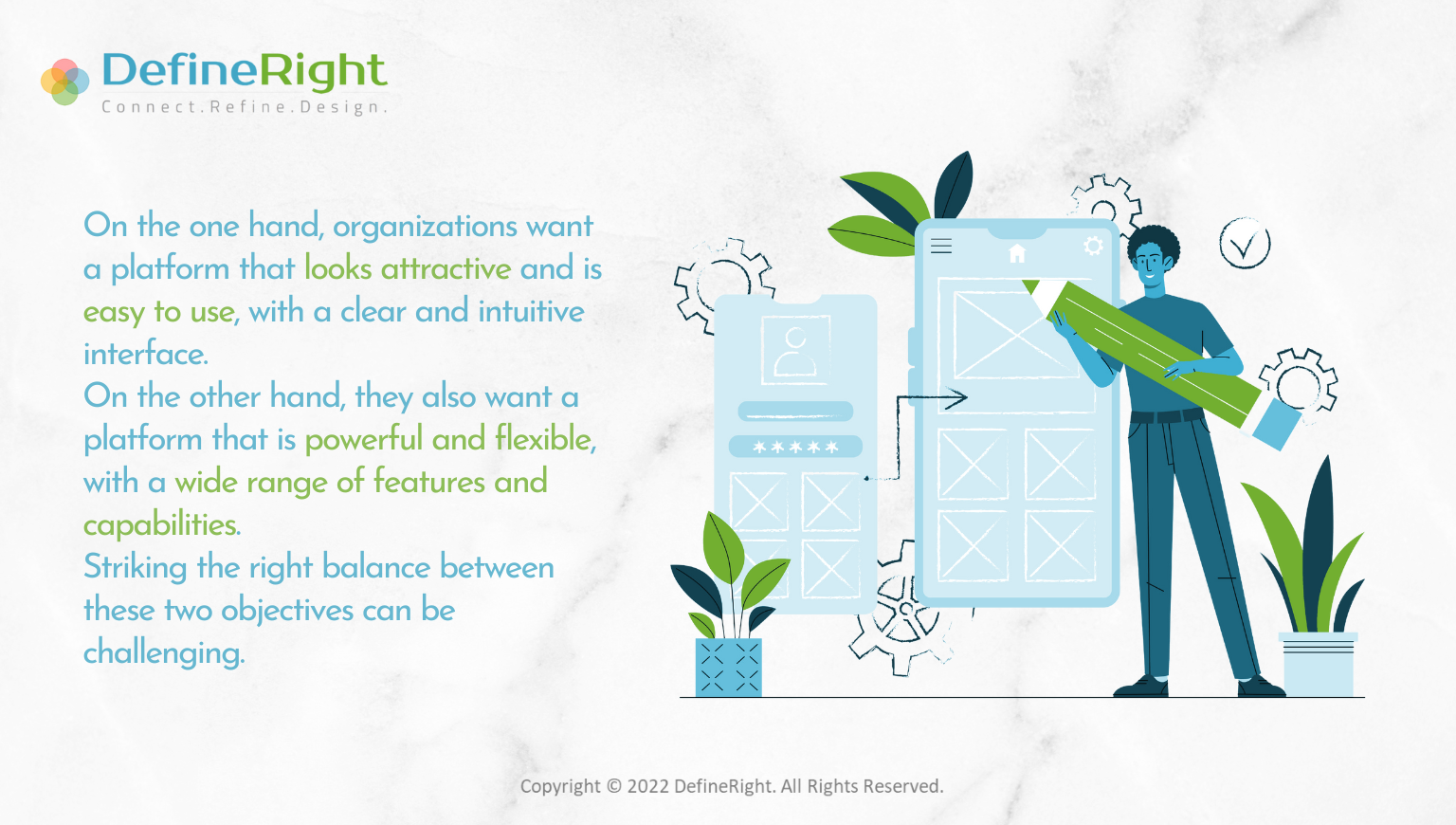
SharePoint, though originally conceptualized as a Content Management Software, has evolved substantially and with the latest move to Online version, has become a highly versatile tool. SharePoint Online being a cloud-based solution is managed by Microsoft and this gives an additional advantage of scalability and availability. It can be bought as standalone or as part of Microsoft suite. No wonder, as per various surveys and reports, more than 250,000 organizations including 80%+ of Fortune 500 use SharePoint with over 200 million users.
From design perspective, SharePoint allows flexibility and customization. Subtle changes allow the designers to match the interface with the brand guidelines of the organizations by allowing customization of fonts, color scheme, layout, logos etc and that too without onboarding a developer at initial stages of project. At an advanced stage, assisted by an experienced developer well versed in PowerShell, Power Automate etc, the level of customization can be further increased.
Design Elements to Keep in Mind

One of the key considerations when designing and implementing a SharePoint platform is the balance between design and functionality. On the one hand, organizations want a platform that looks attractive and is easy to use, with a clear and intuitive interface. On the other hand, they also want a platform that is powerful and flexible, with a wide range of features and capabilities. Striking the right balance between these two objectives can be challenging, and often involves making trade-offs between design and functionality.
Designing a SharePoint site with the customer experience in mind is essential for success. A well-crafted design should incorporate elements such as layout, colours, fonts, and images that work together to create an aesthetically pleasing, user-friendly experience. Careful consideration should also be given to the navigation structure and the overall flow of the site. Additionally, the use of interactive elements, such as animations and interactive menus, can help to create a more engaging and enjoyable experience for the user. By focusing on the customer experience and optimizing the site design, users will have a more positive experience while using the SharePoint site.
The design of a SharePoint site should also be tailored to the specific needs of the organization. For example, if the site is intended to be used for collaboration, the design should be tailored to facilitate collaboration. The navigation should be easy to use, and the content should be organized in an intuitive and streamlined manner. Furthermore, the design needs to account for the specific needs of the end-users. The design of a SharePoint site should also be tailored to the organization’s brand. This includes the use of colors, fonts, and images that reflect the organization’s brand.
UX and UI Are not the Same Thing
Another key factor to consider when designing a SharePoint platform is the user experience. This includes not only the overall look and feel of the platform, but also the ease of use and navigation. A platform that is difficult to use or navigate will likely discourage adoption and hinder productivity, so it is important to design the platform with the user in mind. This might involve conducting user testing to identify areas for improvement or implementing features like responsive design to ensure that the platform works well on different devices and screen sizes.
The design should be consistent across all pages of the site. This will help to ensure a cohesive, unified experience for users. In addition to the design of the site itself, it is also important to consider the functionality of the site. SharePoint sites can be customized to include a variety of features, such as document libraries, blogs, and wikis. It is important to consider which features are necessary for the site, and which features can be omitted.
In terms of functionality, there are many features and capabilities that organizations consider when designing a SharePoint platform. Some of the common ones include:
- Document management: SharePoint allows users to create, edit, and collaborate on documents in real-time. This can be especially useful for organizations that rely on document-based workflows, such as legal firms or consulting firms.
- Project management: SharePoint includes tools for managing projects and tasks, including the ability to assign tasks, track progress, and set deadlines. This can be helpful for organizations that need to coordinate multiple teams or projects.
- Communication and collaboration: SharePoint includes features like group chat, discussion forums, and video conferencing, which can help teams stay connected and work together more effectively.
- Customization: SharePoint allows organizations to customize the platform to meet their specific needs, including the ability to create custom pages, workflows, and integrations with other tools.
Additional Functionalities to Use
Once design, functionality and CX are taken care of, we move to other factors to consider which play a role in balancing design and functionality in SharePoint. These include:
- Customization: SharePoint allows for a high degree of customization, including the ability to add custom themes, branding elements, and custom web parts. This can be useful for creating a platform that aligns with the organization’s branding and style guidelines, but it can also add complexity and increase the risk of errors or conflicts.
- Integration: SharePoint can be integrated with a wide range of other tools and platforms, including Office 365, CRM systems, and external websites. This can be a powerful way to extend the capabilities of the platform, but it also requires careful planning and testing to ensure that the integration is seamless and reliable.
- Security: SharePoint is designed to be a secure platform, with features like user and group-based permissions, data encryption, and compliance with industry standards like GDPR and HIPAA. However, security can also be a trade-off, as more advanced security measures can add complexity and potentially impact the user experience.
Of course, there will always be trade-offs to consider when it comes to design and functionality. For example, adding more features and capabilities to the platform can make it more powerful, but it can also make it more complex and harder to use. Similarly, focusing too much on design can make the platform visually appealing, but it can also distract from the core functionality.
The key to a successful SharePoint platform is to strike the right balance between design and functionality. Good design will provide users with an intuitive, easy-to-navigate interface, while the functionality of the site should be tailored to the specific needs of the organization. By doing composite discovery about the needs and goals of the organization and carefully weighing the trade-offs, it is possible to create a platform that is both visually appealing and functionally powerful, helping to drive collaboration and productivity.
At DefineRight, as part of our business enablement service portfolio, we believe that technical solutions for business evolve as business process changes. By doing deep discovery, the team at DefineRight ensures balance between design and functionalities while keep the applications nimble to respond to changing requirements and complex business scenarios.
